Do Probiotics Help Cats with Vomiting? 2025 Vet Insights
Waking up to a pile of vomit near the litter box is every cat owner’s stressor—you worry your cat is sick, but you’re not sure if do probiotics help cats with vomiting. Feed them the wrong thing, and you might delay real treatment; skip it, and your cat could stay uncomfortable. Worse, some owners mistake emergencies like pancreatitis for “normal upset tummies” and rely only on probiotics, while others panic over harmless hairball vomit and rush to the vet unnecessarily. This guide breaks down why cats vomit, when probiotics work, and how to choose/use them—so you can stop guessing and help your cat feel better.
First: Why Do Cats Vomit? 6 Common Reasons
Not all cat vomiting is the same. To know if probiotics will help, you first need to understand what’s causing the throw-up:
1. Parasites or Infections: Treat the Cause First, Then Use Probiotics
If your cat’s vomit has mucus or blood, plus diarrhea and loss of appetite, parasites (like roundworms) or infections (bacterial or viral, such as feline panleukopenia) are likely. These “invaders” damage the gut lining—probiotics can’t kill them, and waiting to treat the issue will make your cat sicker.
What to do first: Take your cat to the vet for a fecal test (to check for parasites) and blood work (to spot infections). The vet will prescribe dewormers, antibiotics, or antiviral meds. Once vomiting stops, use probiotics to rebuild gut bacteria—meds often kill good bacteria along with bad ones.
2. Hairballs: Probiotics Help Reduce Recurrences
Virtually all cats vomit hairballs sometimes. They spend 30–50% of their day grooming, swallowing loose fur that tangles into a ball in the stomach. When it gets too big, it irritates the gut and comes up.
Hairball vomit is easy to spot: it has a cylindrical fur clump, happens more in spring/fall (shedding seasons), and long-haired breeds (like Persians or Ragdolls) get them more. Your cat will act normal right after—eating or playing like nothing happened.
How probiotics help: They don’t dissolve existing hairballs (use a hairball remedy or cat grass for that). But they speed up gut movement, helping small fur pieces pass in stool instead of forming balls—cutting down on future vomiting.
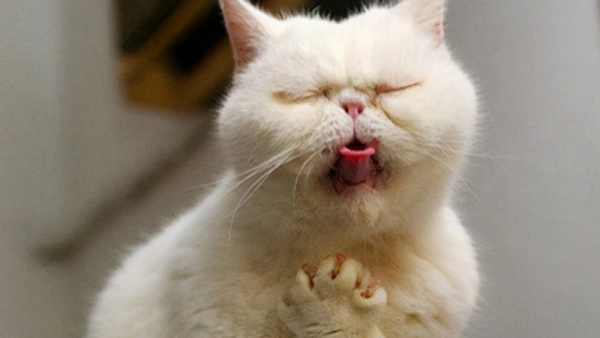
3. Eating/Drinking Too Fast: No Probiotics Needed—Fix Feeding Habits
A hungry cat might scarf down kibble in seconds, or a thirsty one gulp water—both push air into the stomach. Within 10–30 minutes, they’ll vomit up undigested food or foamy liquid.
This is common with big food bowls (cats compete for food) or infrequent water changes (cats drink too fast when thirsty). It has nothing to do with gut bacteria, so probiotics won’t help.
Easy fixes: Use a slow feeder bowl (with bumps to slow eating) or split daily food into 3–4 small portions. For water, use a shallow bowl and change it daily to avoid overdrinking.
4. Motion Sickness: Probiotics Don’t Work—Prepare Ahead
Cats have sensitive inner ears, so car rides or carrier trips can trigger motion sickness. They’ll vomit, drool, and hide—then recover 1–2 hours after stopping.
This is a balance issue, not a gut problem. Probiotics won’t help at all.
Prevention tips: If you need to travel, give your vet-approved anti-nausea meds (like maropitant) 1 hour before leaving. Wrap the carrier in a blanket to reduce jostling, and crack a window for fresh air.
5. Medication Side Effects: Probiotics Protect the Gut
Some meds (antibiotics, non-steroidal anti-inflammatories, or certain dewormers) irritate the gut lining and disrupt bacteria, causing mild vomiting or soft stools. For example, amoxicillin (used for respiratory infections) often triggers this in sensitive cats.
The vomiting is mild (1–2 times a day) and stops when you finish the meds.
How to use probiotics: Give them 2 hours apart from meds (e.g., 9 AM meds, 11 AM probiotics). This keeps meds from killing probiotic bacteria, and probiotics form a protective layer in the gut to reduce irritation.
6. Stress or Food Changes: Probiotics Calm the Gut Fast
Moving, new pets, baths, or sudden food swaps stress cats out, leading to mild vomiting—small amounts of mucus or kibble, with no other symptoms. Once the stressor is gone, they’ll recover in 1–2 days.
This is “functional upset,” not a sick gut. Probiotics work well here.
How to use them: Mix probiotics into new food to help the gut adjust, or give them after a move to stabilize bacteria. They’ll speed up recovery and stop vomiting faster.
When to Take Your Cat to the Vet: Don’t Ignore These Signs
Probiotics aren’t a fix-all. Some vomiting needs emergency care—know the red flags:
Go Within 24 Hours If:
Vomiting 3+ times in 24 hours, or daily for 2 days (even if it’s just kibble or hairballs).
Retching with nothing coming up (could mean a foreign object in the throat or stomach).
Vomit with bright red blood or coffee-ground-like liquid (stomach bleeding), or bloody stool.
Lethargy—your cat hides, refuses treats, or won’t move.
Dehydration signs: sunken eyes, dry nose, or skin that stays folded when you pinch it.
Excessive drooling + bad breath + avoiding touch to the mouth (signs of mouth pain or gingivitis).
Go Within 1 Hour (Emergency!):
Severe vomiting + tense belly + fever (over 103°F/39.5°C): Could be pancreatitis (high mortality rate—needs blood tests fast).
Vomiting + seizures + wobbly walking: Likely toxic ingestion (chocolate, lilies, antifreeze—deadly without quick treatment).
Vomiting + wanting to eat but can’t swallow: May have a foreign object (string, toy pieces) stuck in the esophagus—can cause intestinal necrosis in 24 hours.
Senior cat vomiting + excessive drinking/urination + bad breath: Possible kidney failure (needs kidney function tests).
Vomiting + high temperature (over 104°F/40°C) + fast breathing: Heatstroke—cool your cat with wet towels first, then rush to the vet.
Do Probiotics Help Cats with Vomiting? The Clear Answer
The short answer: Only if vomiting comes from gut bacteria imbalance—not emergencies or infections. Here’s the breakdown:
When Probiotics Work (2 Key Conditions)
Both must be true for probiotics to help:
The vomiting is from “gut bacteria imbalance”: This includes medication side effects, hairball-related gut slowdown, or stress/food change upset. Your cat is active, eats well, and has no dehydration or blood in vomit.
No emergencies or organ issues: Rule out parasites, infections, foreign objects, or diseases like kidney failure first.
Specifically, probiotics help in 5 ways:
Improve digestion: Good bacteria break down protein/fat, reducing undigested food that irritates the stomach (great for kittens or senior cats with weak guts).
Regulate stool: They stop constipation (which causes vomiting from gut blockage) and diarrhea (which irritates the gut lining).
Reduce allergy-related vomiting: If vomiting links to food allergies (e.g., chicken or grains), probiotics lower allergen absorption in the gut.
Fight yeast overgrowth: Yeast (like Malassezia) in the gut causes upset and vomiting—probiotics compete for nutrients to stop yeast growth.
Heal gut lining: They produce short-chain fatty acids (SCFAs) that repair gut tissue damaged by meds or mild irritation.
Note: Probiotics won’t fix dental issues. If vomiting comes from gingivitis or tartar, your cat needs a vet cleaning first.
When Probiotics Don’t Work (Don’t Waste Money)
Probiotics are useless or harmful in these cases:
Emergencies: Pancreatitis, poisoning, or foreign objects need meds, surgery, or antidotes—probiotics add gut strain.
Non-gut causes: Motion sickness, mouth pain, or kidney disease—probiotics can’t fix balance, pain, or organ damage.
Severe vomiting: If your cat vomits 3+ times a day or won’t eat/drink, they need IV fluids and anti-nausea meds first. Probiotics come later, once stable.
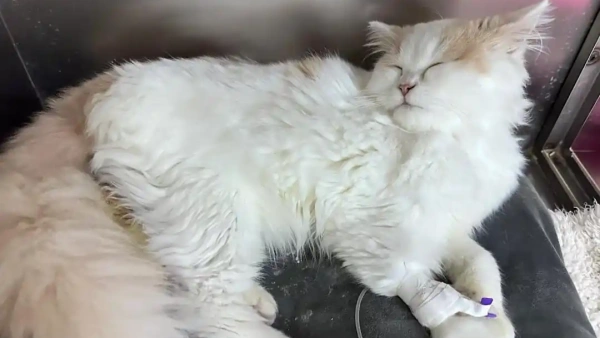
How to Choose the Right Probiotics for Vomiting Cats
Not all probiotics are equal. Follow these 3 rules to pick one that works:
1. Choose the Right Strains (Vet-Recommended)
Different strains target different issues. Here are the 5 safest, most effective ones for vomiting cats:
| Strain Name | Best For | Notes |
|---|---|---|
| Bifidobacterium animalis | Medication-related vomiting | Needs refrigeration; protects gut from med irritation |
| Bifidobacterium breve | Allergy-induced vomiting | Gentle for kittens (4+ weeks old) |
| Bifidobacterium lactis | Hairball-related constipation/vomiting | Works best with hairball remedies |
| Lactobacillus acidophilus | Vomiting + diarrhea | Wait 2 hours after antibiotics |
| Lactobacillus casei | Senior cat digestive vomiting | Survives stomach acid well |
Everything Our Vets Recommend
Red flag: Avoid probiotics that only say “lactic acid bacteria” (no specific strains). They’re untested and may not help—or irritate your cat’s gut.
2. Pick the Right Form and CFU Count
Form: Choose powder or capsules (open capsules to mix with kibble or wet food—cats won’t notice). For kittens, use liquid drops (easier to absorb). Skip tablets—cats hate them, and forcing them can cause choking.
CFU Count: Aim for 1–2 billion CFUs (colony-forming units) per dose. Less than 1 billion won’t work; more than 2 billion can cause gas or bloating. Example: A 10-lb (4.5-kg) cat needs 1 billion CFUs per day.
3. Check for Clean Ingredients
Avoid probiotics with sugar, artificial colors, or flavors—these irritate sensitive guts and make vomiting worse. Good probiotics have simple labels: just “probiotic strains + prebiotics” (prebiotics are food for probiotics, like FOS or inulin).
How to Use Probiotics for Cats Vomiting
Even the best probiotics won’t work if you use them wrong. Follow these steps:
1. How Long Until You See Results?
Acute issues (med side effects, food swaps): 3–7 days. You’ll see less vomiting (1x every 2–3 days instead of daily) and firmer stools.
Chronic issues (hairballs, senior cat gut slowdown): 2–4 weeks. Hairball vomiting will drop to 1x a month or less, and your cat will eat more consistently.
If no results in 7 days: Stop using the probiotic. It may be the wrong strain, or your cat has a hidden issue (like early pancreatitis). Take them to the vet for a checkup.
2. How Much to Give (By Weight)
Kittens (1–10 lbs/0.5–4.5 kg): 500 million–1 billion CFUs per day (1/4 tsp of powder if it’s 4 billion CFUs per bag).
Adult cats (10–18 lbs/4.5–8 kg): 1–2 billion CFUs per day (1/2 tsp of powder or 1 capsule).
Senior cats (18+ lbs/8+ kg): Start with 1 billion CFUs per day. If no gas, increase to 1.5 billion.
Tip: Always start with half the dose for the first 24 hours. This lets your cat’s gut adjust and avoids bloating.
3. How to Pair with Other Meds
Anti-nausea meds: Safe to use together—wait 1 hour between them (e.g., 9 AM anti-nausea, 10 AM probiotics) to avoid mixing in the stomach.
Antibiotics: Wait 2–3 hours. Antibiotics kill bacteria (good and bad), so timing keeps probiotics alive.
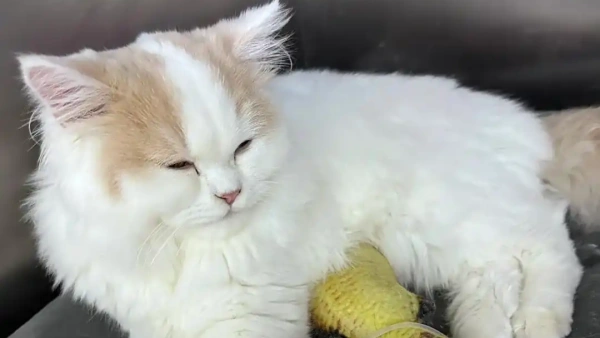
do probiotics help cats with vomiting FAQs
Will probiotics help my cat vomit less from hairballs?
Yes, but they won’t replace hairball remedies. Probiotics speed up gut movement, helping small fur pieces pass in stool instead of forming balls—this cuts down on how often your cat vomits hairballs. First, use a hairball paste or cat grass to help your cat pass existing balls. Once vomiting stops, add probiotics to reduce future hairball formation. If your cat vomits hairballs more than 2x a week, check for over-grooming (from stress or skin irritation) and fix that too.
How long should I give my cat probiotics for vomiting?
It depends on the cause. For acute issues (med side effects, stress), give probiotics for 7–10 days. Once vomiting stops, cut to every other day for 1 week, then stop—this lets the gut rebuild its own bacteria. For chronic issues (hairballs, senior gut slowdown), give probiotics for 2–4 weeks. After that, switch to 2–3x a week as prevention. Don’t give probiotics long-term unless your vet says so—your cat’s gut needs to learn to balance bacteria on its own.
My cat is vomiting more after probiotics—what’s wrong?
Three common reasons: 1) It’s the wrong strain (e.g., using a diarrhea-focused strain for constipation-related vomiting)—switch to Bifidobacterium lactis for constipation. 2) The dose is too high—cut it in half and see if vomiting slows. 3) Hidden emergency (like pancreatitis)—probiotics are adding gut strain. If you adjust the strain/dose and vomiting doesn’t stop in 2–3 days, take your cat to the vet. They may need blood work or X-rays to rule out serious issues.
Do probiotics help cats with vomiting? Only when the issue is gut bacteria imbalance—not emergencies. As a cat owner, your first step is to check for red flags (blood, lethargy, dehydration)—if you see them, go to the vet. If it’s mild (hairballs, stress, med side effects), choose a probiotic with vet-recommended strains, use the right dose, and pair it with gut-friendly habits (slow feeding, hairball care). With the right approach, probiotics can calm your cat’s upset gut and cut down on vomiting—helping both you and your furry friend feel better. Start by picking a probiotic with clear strains and clean ingredients, and talk to your vet if you’re unsure—it’s the safest way to help your cat.
You May Like:
- Best Probiotic Supplement for Cats in 2025: Vet-Approved Picks
- Best Probiotics for Cats – 2025 Latest Picks for Gut Health
- 4 Probiotics for Cats with Diarrhea: Vet-Tips to Stop Loose Stools
- What To Do If Your Cat Foams At The Mouth? First Aid Manual
User Comments
Does flea treatment kill ear mites too?
Can dogs take human probiotics?
Can dogs have people probiotics safely?

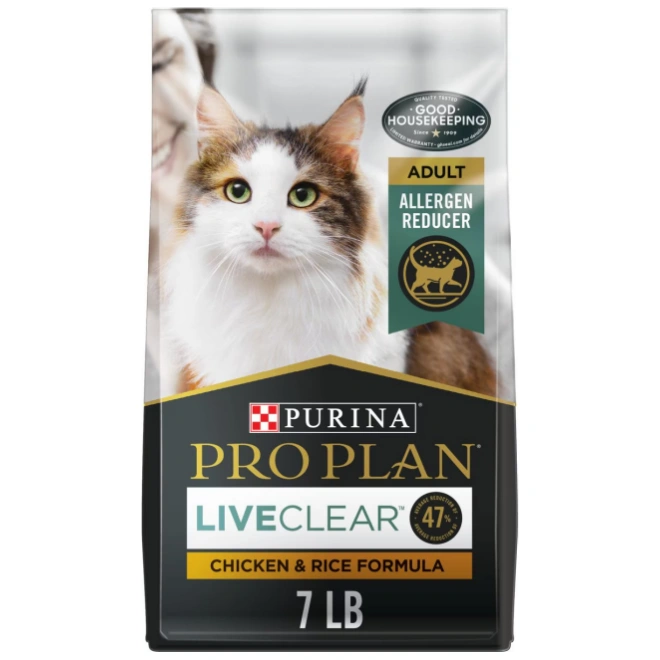
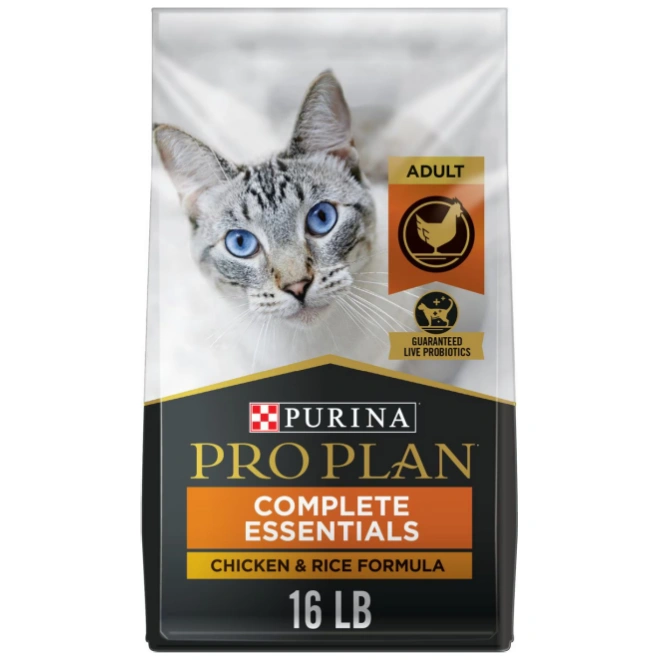
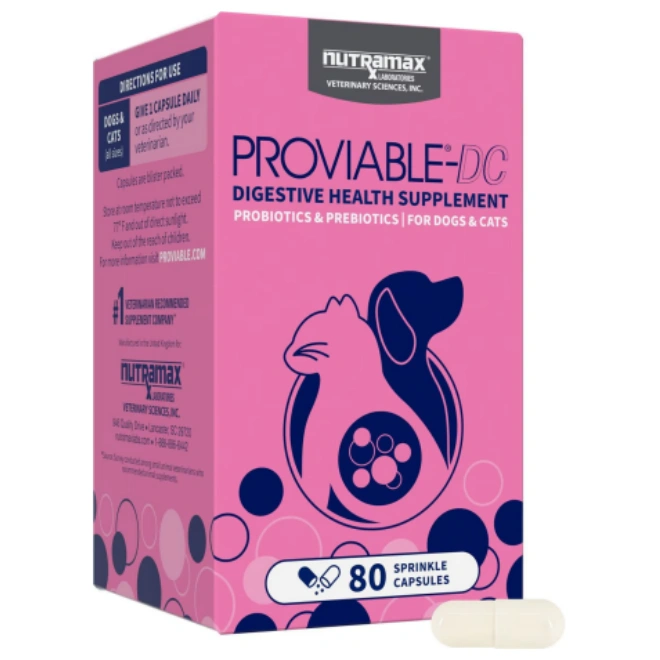
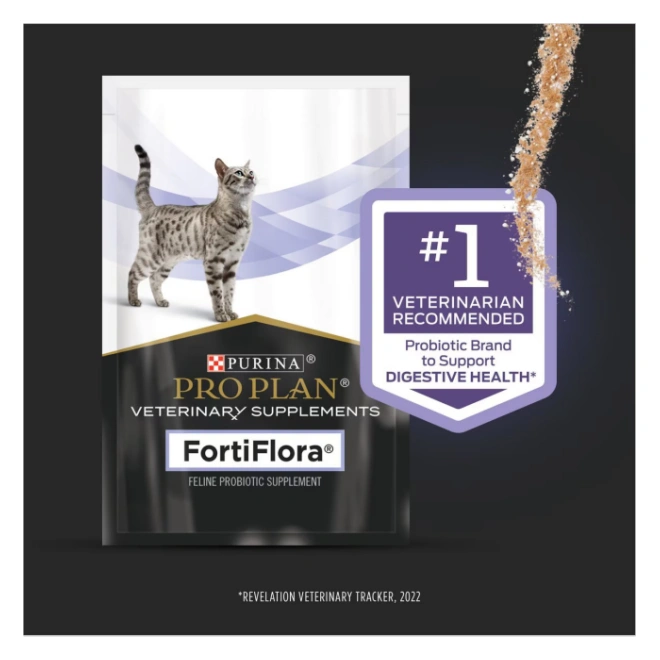
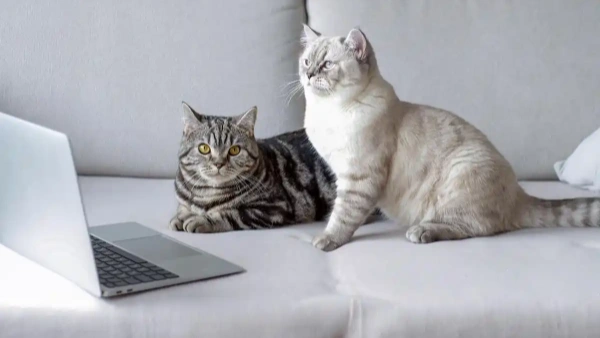
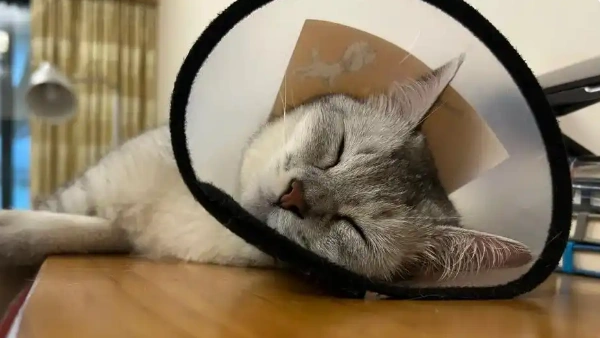
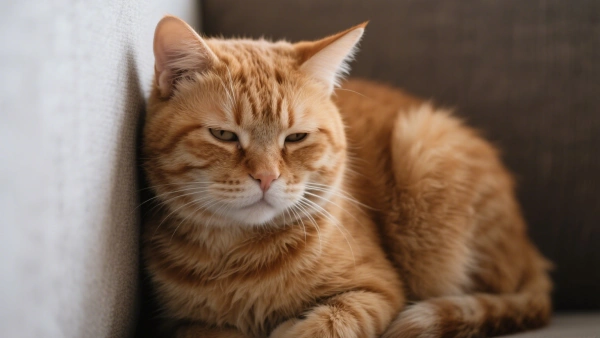








Leave a Reply